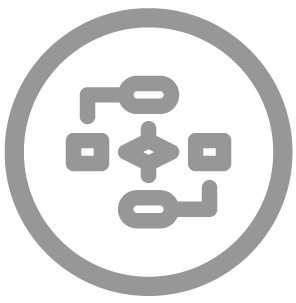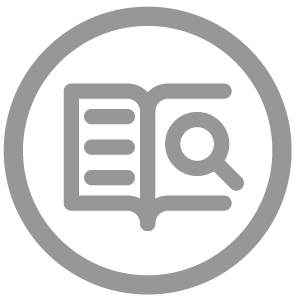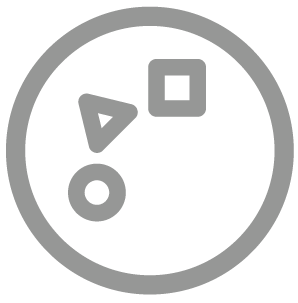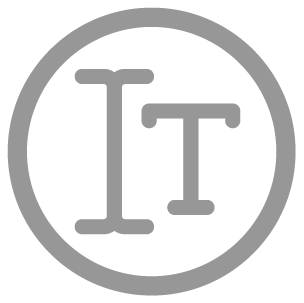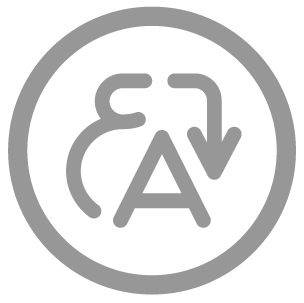Human–Machine Collaboration (HMC) Icons
Frequently Asked Questions (FAQs)
Common Research, Design and Publications Functions
As a foundation for the development of the classification system, we considered various processes that may involve machines:
- Conceptualisation: The process of generating ideas and combining concepts to create new insights or solutions. It includes brainstorming, problem-framing, idea development, and the design of approaches and research methodologies.
- Data collection: The application of varied approaches to collect information through primary or secondary research.
- Data analysis: The application of varied methods, both qualitative and quantitative, to analyse information collected through primary or secondary research.
- Data interpretation: The application of critical analysis and reflection to uncover thematic findings and conclusions from collected and analysed data.
- Writing: The use of written language to express opinions, present findings and provide critical analysis.
- Translation: The process of converting text from an original, authoritative and operative version into another language while maintaining its meaning and intent.
- Visuals: Components of a report, video or other content used to convey information visually. These may include images, charts, graphs, visualisations, motion graphics and other representations.
- Design: The process and output of organising visual and functional elements of research into presentations, reports or other media (such as podcasts or videos).
FAQs
What is the purpose of the HMC icons?
The HMC icons provide a clear and standardised way of showing the extent to which machines were involved in the research and publication process within a specific report or publication.
Why do we need HMC icons?
As machine contributions become more common in research, writing, and content creation, the icons help promote transparency particularly important for readers using such reports or publications to inform decision-making.
Are the HMC icons mandatory?
No, the icons are opt-in and voluntary except for all Dubai Government entities or those working with the Dubai Government. They are meant to encourage honest self-assessment and transparency. Anyone involved in creating content, including researchers, writers, designers, or consultants, can choose to use them.
What is the scope of "research and publications"?
It includes all creative and intellectual work produced as an output of research. This ranges from academic papers, technical and annual reports, to videos, art, educational materials and other multimedia content.
How do you define a Machine in HMC icons?
We use a broad definition of a ‘machine’ to include digital technologies such as algorithms, automation tools, generative AI and robots, any system that contributes to the research or content production process.
Do I need to include all common research and publication functions in my icons?
No. Only use the functions that were actually part of your process.
What’s the difference between visuals that are ‘Machine Assisted’ and those that are ‘Human Led’?
‘Machine Assisted’ visuals involve tools like AI to help generate or enhance imagery from the start. In contrast, “Human Led” visuals begin with a human-driven concept, direction, and original imagery, with minimal or no machine input at the start.
Can I use these icons for non-research content?
Yes! You can use them on social media, in videos, images, or any other content that involves, or could involve, AI or machine assistance.
How does the HMC icon system work?
The system has two parts:
Step 1: HMC icons that show the level of human vs. machine involvement (from fully human to fully machine).
Step 2: Identifies the specific common research and publications functions involved (e.g., ideation, data analysis, writing, visuals).
Is there a standard way to measure the percentage of machine involvement?
No. The framework avoids strict percentages because it’s hard to measure AI contributions objectively, especially with generative tools.
Where should the icons be placed?
Place them on the cover, in the footnotes, or in the disclaimer section of your research paper, report, or content.
Are the icons copyrighted?
Yes, the icons are copyrighted by the Dubai Future Foundation.
Do I need permission to use them?
No. The icons are free to use.
Can I start using these icons in my own work?
Absolutely! And you’re welcome to share your feedback with the team at [email protected].
